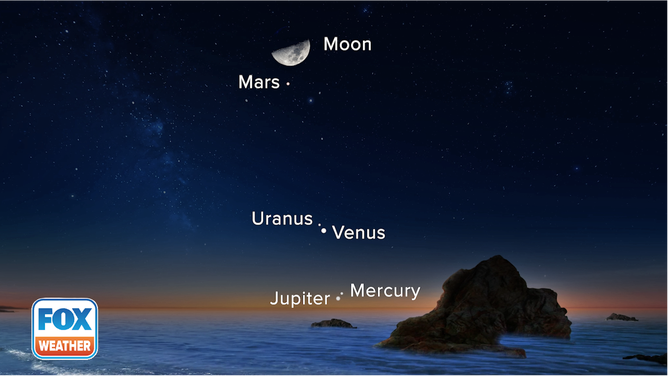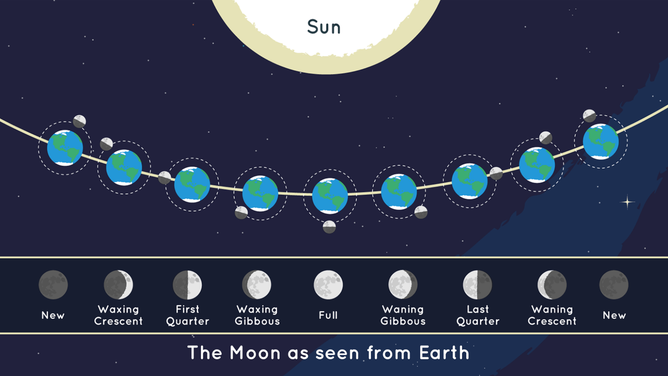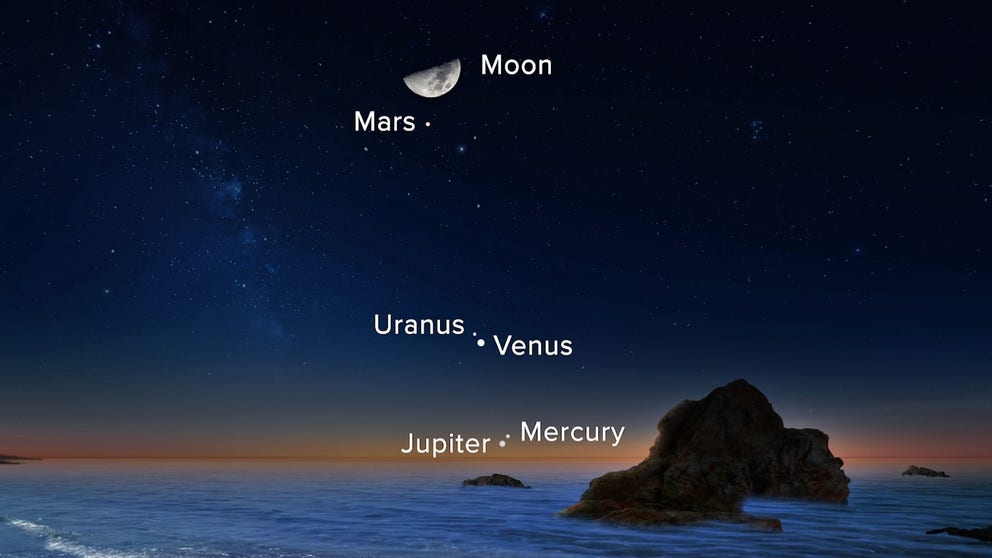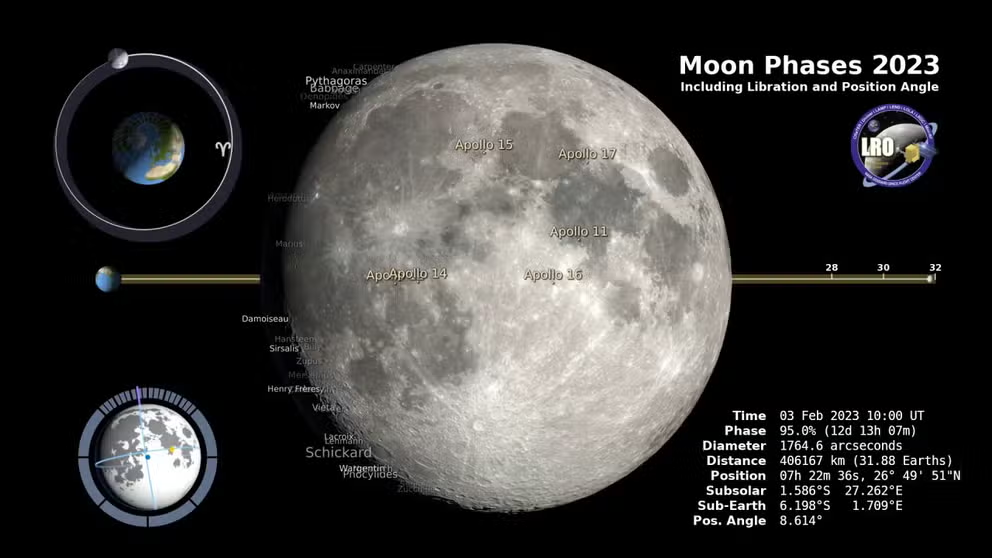March's 5-planet alignment adds new pieces to celestial puzzle this weekend
The last time a five-planet alignment was visible from Earth was in June 2022. Cloud cover or light pollution can significantly impact viewing.
How and when to watch 5 planets align in the night sky this week
A planetary parade is expected after sunset on March 28 when Jupiter, Mercury, Venus, Uranus, Mars and the moon all align.
If the stunning sight of the aurora borealis across the northern U.S. wasn’t enough of a thrill, stargazers have the chance to see five planets align in the sky, with the moon also visible in its waxing state.
Every night in late March, another piece of the celestial puzzle will unveil itself. The alignment will start to take shape over the weekend, with the moon joining the pack of already visible planets. The peak of this planetary parade is expected after sunset on March 28 when Jupiter, Mercury, Venus, Uranus, Mars and the moon all align.
Astronomers said it is imperative that skies are clear and light pollution is minimal to see the display, which will only be visible for a limited time until Jupiter and Mercury dip below the horizon.
WATCH OUT FOR THESE ASTRONOMICAL EVENTS IN 2023
To view the entire assortment, it is suggested you have binoculars or a telescope and look in the western sky just after sunset.
Jupiter and Mercury will appear to be bunched together, followed by Uranus and Venus and, finally, Mars and the moon.

Jupiter, Mercury, Uranus, Venus, Mars and the moon during a five-planet alignment on March 28, 2023.
(FOX Weather)
Even though the planets could appear close at times, they are actually millions of miles away from each other. Jupiter, the fifth planet from the sun, is about 484 million miles from the giant star and just over 400 million miles away from Mercury.
Planetary alignments are not an uncommon phenomenon and occur when the celestial bodies are on the same side of the sun. Due to each planet taking a different amount of time to orbit the star, alignments can vary from just a few being visible from Earth to even five or six planets on rare occasions.
The appearance of an alignment of all eight planets is considered to be the rarest form, and experts expect it won’t happen until May 6, 2492.

The moon takes about 29.5 days to complete a full cycle.
(NASA)
SEE THE OBJECTS HUMANS LEFT BEHIND ON THE MOON
If you miss the display of the five planets, the next celestial event to be on the lookout for will be the rising of the pink moon on April 6.
Thirteen full moons will grace the skies this year, with the extra sighting scheduled to happen in late August.
Video: Moon phases in 2023
The moon will be full 13 times in 2023 thanks to its orbit.

